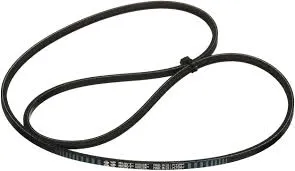- Arabic
- French
- Russian
- Spanish
- Portuguese
- Turkish
- Armenian
- English
- Albanian
- Amharic
- Azerbaijani
- Basque
- Belarusian
- Bengali
- Bosnian
- Bulgarian
- Catalan
- Cebuano
- Corsican
- Croatian
- Czech
- Danish
- Dutch
- Afrikaans
- Esperanto
- Estonian
- Finnish
- Frisian
- Galician
- Georgian
- German
- Greek
- Gujarati
- Haitian Creole
- hausa
- hawaiian
- Hebrew
- Hindi
- Miao
- Hungarian
- Icelandic
- igbo
- Indonesian
- irish
- Italian
- Japanese
- Javanese
- Kannada
- kazakh
- Khmer
- Rwandese
- Korean
- Kurdish
- Kyrgyz
- Lao
- Latin
- Latvian
- Lithuanian
- Luxembourgish
- Macedonian
- Malgashi
- Malay
- Malayalam
- Maltese
- Maori
- Marathi
- Mongolian
- Myanmar
- Nepali
- Norwegian
- Norwegian
- Occitan
- Pashto
- Persian
- Polish
- Punjabi
- Romanian
- Samoan
- Scottish Gaelic
- Serbian
- Sesotho
- Shona
- Sindhi
- Sinhala
- Slovak
- Slovenian
- Somali
- Sundanese
- Swahili
- Swedish
- Tagalog
- Tajik
- Tamil
- Tatar
- Telugu
- Thai
- Turkmen
- Ukrainian
- Urdu
- Uighur
- Uzbek
- Vietnamese
- Welsh
- Bantu
- Yiddish
- Yoruba
- Zulu
اکتبر . 08, 2024 16:20 Back to list
V-Belt Sheave Design and Application Guide for Optimal Performance
Understanding V-Belt Sheaves An Essential Component in Mechanical Power Transmission
V-belt sheaves, also known as V-belt pulleys, play a crucial role in the mechanical power transmission industry. They serve as vital components that aid in the transfer of rotational energy between different parts of machinery, helping to drive various applications from industrial equipment to household appliances. This article will explore the function, design, and applications of V-belt sheaves, providing insights into why they are indispensable in today's mechanical systems.
The Function of V-Belt Sheaves
At the heart of any power transmission system lies the need for efficient energy transfer. V-belt sheaves contribute to this by working in tandem with V-belts, which have a trapezoidal cross-section. This unique shape enables a snug fit into the grooves of the sheave, allowing for optimal friction and minimal slippage during operation. The primary function of these sheaves is to convert rotational motion from a driving source, such as an electric motor, into mechanical energy that can be used to power various devices and machinery.
Moreover, V-belt sheaves facilitate speed reduction or increase, depending on their sizes and arrangements. For instance, a smaller sheave connected to a larger one will generally increase the output speed, while a larger sheave driving a smaller one will typically reduce the output speed. This adaptability makes them versatile components in a wide range of machinery.
Design and Material Considerations
The design of V-belt sheaves is critical for their efficiency and longevity. They are usually made from materials like cast iron, aluminum, or steel, each chosen based on factors such as strength, weight, and cost. The choice of material can significantly affect the sheave's performance, particularly under high loads or harsh operating conditions.
v-belt sheave

Additionally, the groove design of the sheave is another vital aspect to consider. The angle, depth, and spacing of the grooves determine how well the belt fits and how much power can be transmitted. Proper groove design not only improves the efficiency of power transmission but also extends the lifespan of both the sheave and the V-belt.
Applications of V-Belt Sheaves
V-belt sheaves are used in a broad spectrum of applications across various industries. From agricultural machines and conveyors to automotive engines and HVAC systems, their versatility is evident. In agriculture, for example, they can drive equipment like combines and tractors, while in industrial settings, they are prevalent in conveyors and unit drives.
Furthermore, in the automotive sector, V-belt sheaves are essential for various accessories such as alternators, water pumps, and AC compressors, ensuring that they function effectively as part of the motor system.
Conclusion
In conclusion, V-belt sheaves are essential components in mechanical power transmission systems, playing a vital role in various applications. Their ability to effectively transmit power with minimal slippage, combined with their adaptability and efficiency, makes them indispensable in both industrial and consumer applications. Understanding their function, design, and use is crucial for anyone involved in mechanical engineering, manufacturing, or maintenance, as it can lead to enhanced performance and longer equipment lifespans. Whether you are designing a new machine or maintaining existing equipment, the importance of selecting the right V-belt sheave cannot be overstated.
-
Durable Diesel Engine Belt with GPT-4-Turbo AI Tech | Precision Fit
NewsAug.04,2025
-
High-Quality Tensioner Belt Pulley - Durable & Efficient
NewsAug.03,2025
-
Premium Timing Belt Factory | AI-Optimized Solutions
NewsAug.02,2025
-
Premium Custom V Belts Enhanced with GPT-4 Turbo AI
NewsAug.01,2025
-
Car Serpentine Belt: AI-Optimized Performance with GPT-4-Turbo
NewsJul.31,2025
-
Heat Joining Drive Belt | High-Durability Fusion Solution
NewsJul.31,2025

